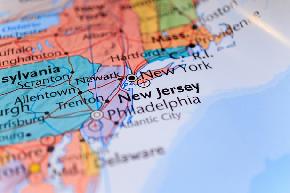![Meyer: “Attendees will see what a global leader looks like in our asset class, how [GLP] operates in other markets as well as their take on consolidating ownership.”](https://images.globest.com/contrib/content/uploads/sites/354/2016/05/nj-craig-meyer.jpg) Meyer: “Attendees will see what a global leader looks like in our asset class, how [GLP] operates in other markets as well as their take on consolidating ownership.”
Meyer: “Attendees will see what a global leader looks like in our asset class, how [GLP] operates in other markets as well as their take on consolidating ownership.”
GlobeSt.com: What do you think attendees will find most interesting about your discussion with Ming Mei?
Meyer: I.CON attendees are going to have some behind-the-scenes insight into the global strategy of Global Logistics Properties. The last couple of years we have seen continuing consolidation of ownership into large institutions across the world, and it’s clear that GLP is among a handful of global players and global brands. For the U.S. audience, it will be interesting to hear more about GLP’s recent entry into the country with its two acquisitions.
GlobeSt.com: What is surprising about the way sovereign wealth funds approach acquisition vs. the way other investors do?
Meyer: I think it’s really a matter of scale. It’s really more about how global industrial or logistics real estate assets have matured. These investors like to invest large chunks – up to $1 billion – and historically, it’s very difficult to do that with singular or one-off deals. A lot of funds that did down-the-street acquisitions did the work that enabled sovereign wealth funds to invest in their portfolios. To me, what’s surprising is how unique it has been to this cycle and asset class to create these scaled portfolios.
GlobeSt.com: What else should our readers know about the chat you’ll have with Ming Mei?
Meyer: It will be interesting to look at the history of GLP, its inception and how it operates in Asia as the biggest player in the region, particularly in China, Japan and South America. Attendees will see what a global leader looks like in the industrial asset class, how this firm operates in other markets, as well as their take on consolidating ownership. It’s similar to the service side in the brokerage business – you see the same big-name American firms like Amazon operating as tenants in Europe and South America. In this rarefied world of global logistics, you begin to see the same owners, service providers, forms of capital and tenants all over the world.
To sum up, it’s becoming more and more a global industry; we’re beginning to see consolidating brands around development, service providers, capital and even tenants; and with sovereign wealth funds, it’s really a matter of scale, where the IITs and IndCors did the work at the local level and one by one amassed enough properties for a premium to be paid in the marketplace to put them into portfolios.
The other thing that has been interesting throughout this cycle is the restructuring of the U.S. supply chain. It used to be focused on distribution, but now the fulfillment model is growing and has evolved through this whole phase. A huge section of this space are properties larger than 500,000 square feet, so the sizing has changed as well. All of these changes have created a favored asset class with enormous warehouses on long-term leases to brand-name tenants and predictable rates of return.

















 Copyright © 2024 ALM Global, LLC. All Rights Reserved.
Copyright © 2024 ALM Global, LLC. All Rights Reserved.